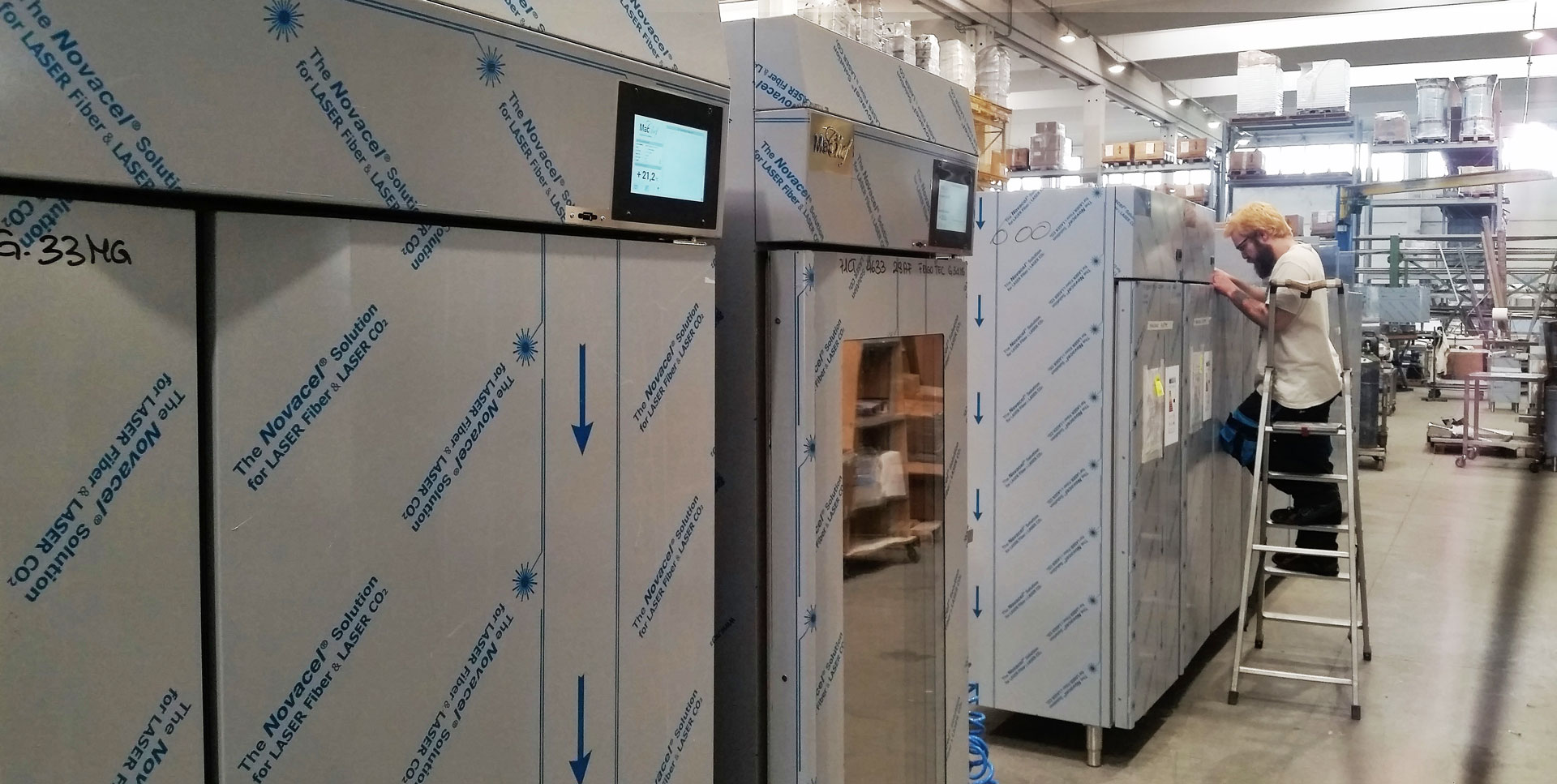
REFRIGERATION
The origins of industrial refrigeration, as we know it, can be traced back to the early 1800s. It was back then that it was first theorized by Oliver Evans, and later, after a few decades, put into practice by Jacob Perkins (and implemented by John Gorrie and others over the years). But the origins of refrigeration tout court, well, those are to be traced much further back.
In fact, already in the ancient Egypt of the Pharaohs, there was a sort of rudimental refrigerator, called clay-pot, of which more elaborated versions are still in use in some parts of the world: for example in the Maghreb, where it is known as Zeer, or in the Indian subcontinent, there called Matki.
The system is quite simple and yet effective: a smaller pot, positioned inside a larger one. Inside the gap between said two recipients, some sand is placed, and then water (if the internal vessel is well insulated, sea water can also be poured). Eventually, everything is covered with a wet cloth. By evaporating, the water in the cavity cools the food contained in the inner vessel (as long as it is in a relatively dry environment.
An invention that still facilitates the life of those who live in places without electricity!!
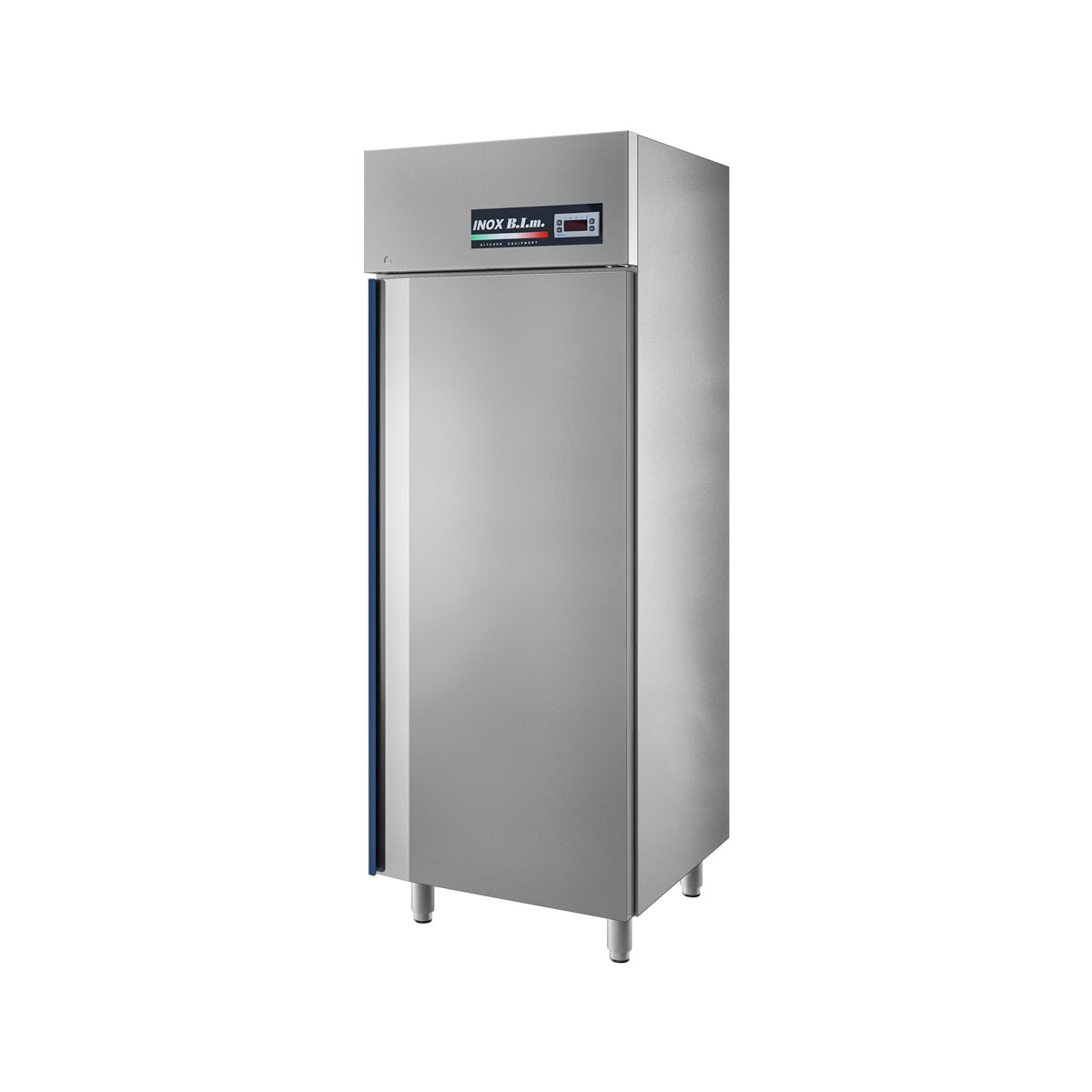
REFRIGERATED CABINETS
“The Virginia Housewife”, written by Mary Randolph, was a best-seller back in the XIX century. A recipe book (with a few household hints as such as cleaning silver, making soap, drying herbs and so on) first published in 1824, and so popular it had at least twenty following editions.
Reading it, you might be surprised: when it explains how “to corn beef in hot weather”, the author suggests “if you have an ice-house or refrigerator, it will be best to keep it there”.
Wait… a refrigerator? In 1824?
Well, it’s not some sort of mystery (like aliens and pyramids). She even had one of those in the lounge room of her boarding house.
It was nothing more than a device made of two tanks (a smaller one inside the bigger external one) with some crushed charcoal in between them. Said rudimental device must have been well insulated, considering it could store ice for 24 hours.
And said proto-refrigerator wasn’t even the first one of its kind, being a similar equipment patented in 1802 by a butter-maker called Moore (who sold one of his creations to the President Thomas Jefferson, a close family-friend to Mrs. Randolph). And in 1815 two businessmen (J.W. Bronaugh and J. Talbot) implemented said invention with crushed charcoal as insulator.
So, no mystery there.
To see the first refrigerators as we know them (a “vapor compression” system powered by electricity), humankind had to wait a few more decades…

A-CLASS REFRIGERATED CABINETS
Ever heard of Henry Sidgwick?
An English philosopher from the XIX century. A look that reminds Rasputin.
But, definitely, another kind of mind.
So, Sidgwick wrote a beautiful book back in 1874, called “The Methods of Ethics”, in which a new political doctrine was theorized: utilitarianism.
The good ol’ Henry dug up an ancient problem tho: every single member of the community should promote the greatest amount of happiness of the whole; but it is way overoptimistic thinking that everyone is willing to sacrifice his own individual interest to the common good.
So, that leads me to the INOX BIM A-Class refrigerators. They allow you to save money on your electric bills contributing to reduce the consumption of electricity and CO2 emissions.
Your own interest and the common good finally square with one another.
Hurray!
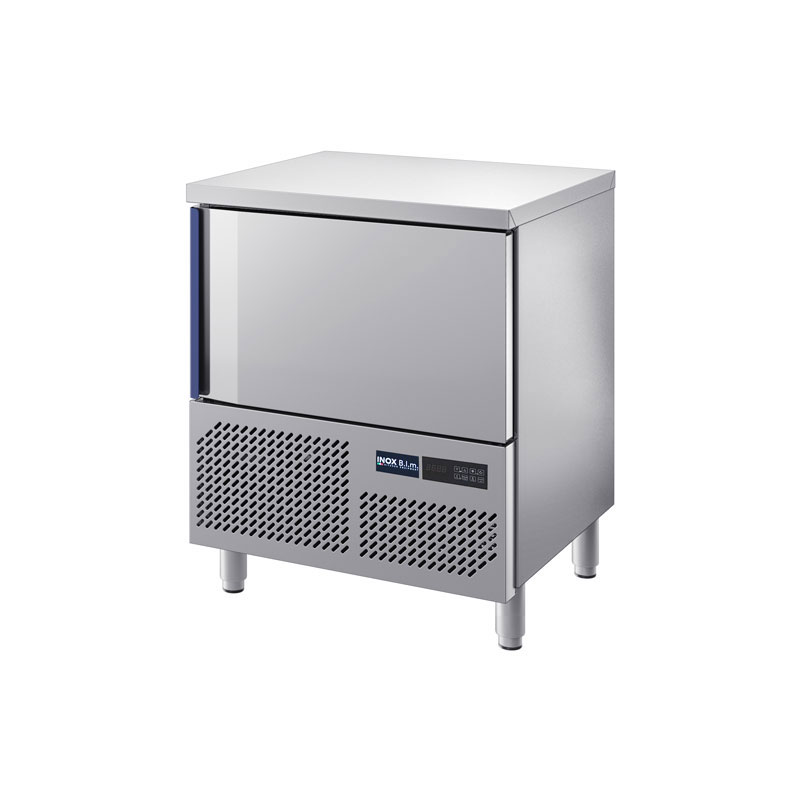
BLAST CHILLERS
Not long ago, two researchers of the University of Bretagne/Sud (France) published a research paper showing the results of their experiment: people are subconsciously inclined to drink faster in a loud environment.
An increase in the Decibel scale (specifically from 72 to 88dB) led to a quicker alcohol consumption (20% faster on average).
Now, waiting and kitchen staff are asked to stay sober while working (and I 100% agree with that).
But, what the hell… a good beer at the end of the shift is well deserved.
The blast chiller by Inox Bim fully charged and operational, isn’t loud at all: less than 65 decibel!
So you can sip your drink with no (unconscious) haste!
Ain’t that great?
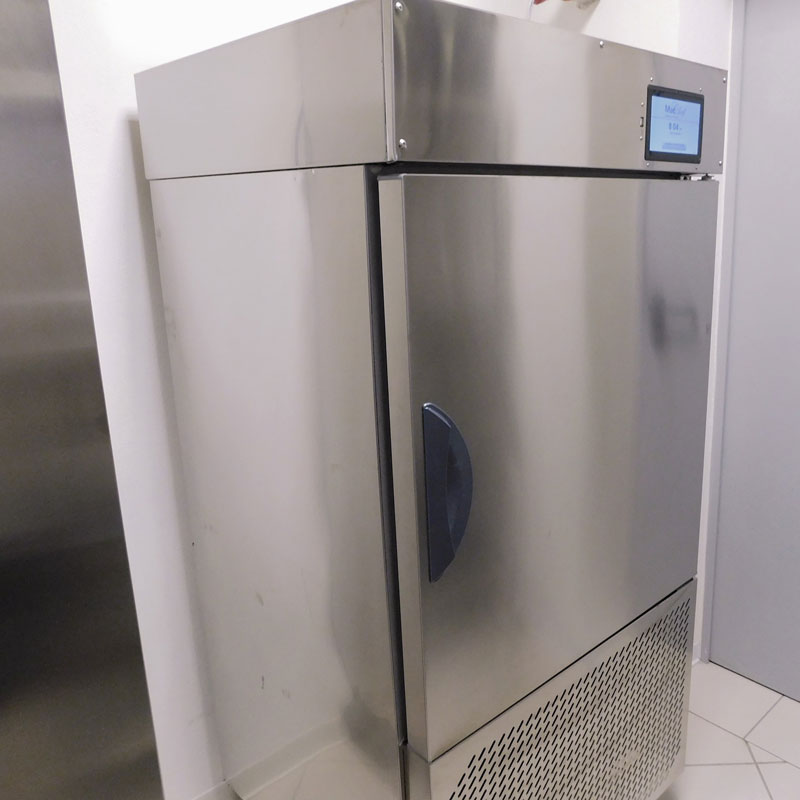
AS BLAST CHILLERS / DEFROSTERS
Ever heard of Yin and Yang?
Well, you may have come across these terms. More likely, thanks to that friend who keeps talking about quantum energy and healing stones.
In a nutshell, this is a dualism principle, describing how all things exist as inseparable and contradictory opposites, being complementary and interdependent to each other.
So, “Yin” and “Yang” need each other. They are not mutually exclusive terms. They rather coexist and even rely on one another to exist.
“Day/night”, “Male/female”, “Light/shadow”, “Summer/winter” are just few of the most immediate examples of it.
And then there’s my favourite: “Hot/cold“.
Two opposite forces that coexist in the AS Blast Chiller/Defroster from Inox Bim.
This goes from -38° up to +69°, allowing you to do many operations that might sound opposites, but in reality are very “yin” and “yiang“.
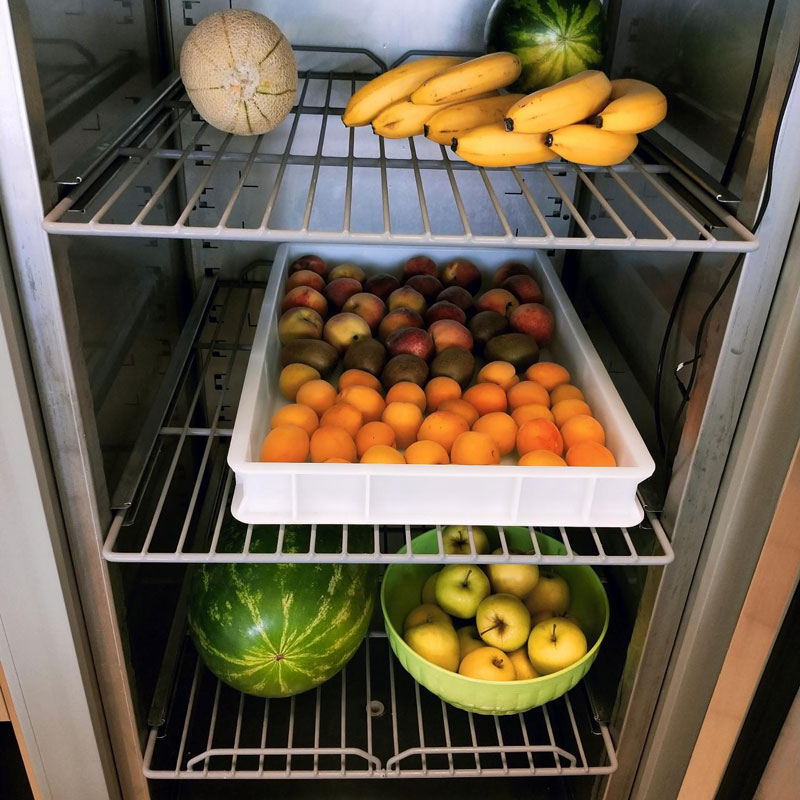
OZONE CABINETS
Friedrich Schiller was an amazing man of culture of the German Enlightenment age.
His intellectual production was huge, consistent all along his career, in quantity as well in quality.
His work ranges from philosophy to physics, from history to poetry, from music to playwrighting.
Such a prolific author must have a source of inspiration, you may be wondering.
Well … yes. Schiller had a “trick“. And one day, a friend with whom he used to hang out, a guy named Johann Wolfgang von Goethe, found this out.
Schiller used to store in one drawer of his desk a few apples, letting them spoil.
The aroma of the rotten apples helped him focus on his work, heightening his creativity.
Goethe found it disgusting, but Schiller wasn’t intentioned to drop this habit for nothing in the world.
According to his wife’s words: “he could not live or work without it“.
If you want to try something inspiring too, I would recommend something less “smelly“.
On the other hand, I can recommend an excellent line of ozone refrigerators to store fruit and extend its shelf-life tho!
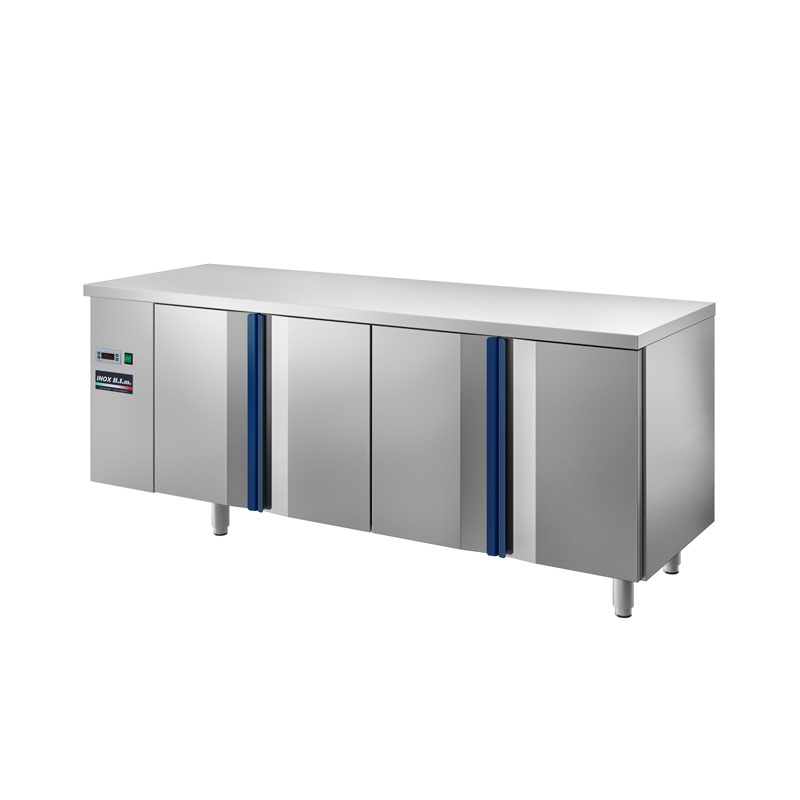
REFRIGRATED TABLES
Did you know a state law in Pennsylvania (USA) forbids to sleep on top of a refrigerator outdoors?
Well, at least what you learn reading some blog or website (lots of, I admit) talking about weird laws all over the world (for some reason, most of them are from US).
But truth is that you can’t find any actual statute claiming it. So, it would call BS on that…
Most of the times, in fact, these myths are triggered by some local ordinance or judicial interpretation and over-exaggerated for the sake of hilarity.
So, you can sleep on atop of the Inox Bim Refrigerated Table. Although I’d suggest you to use it for storing food.
Anyway, your call!
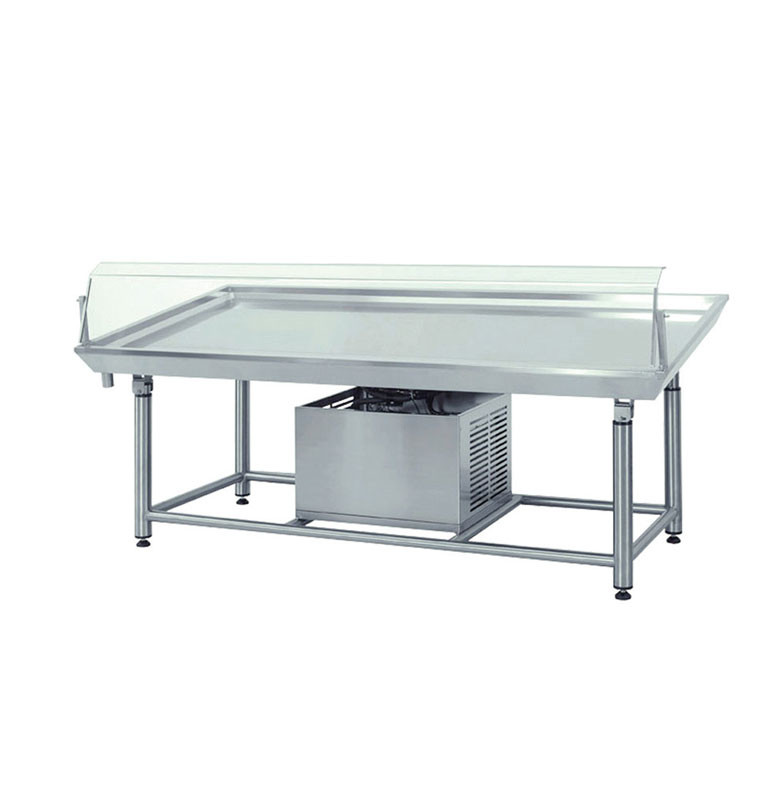
FISH COUNTERS
Do you know when the first food critic appear?
Well, it wasn’t that much long after the first cook…
V Century BC, Sicily (a wealth Greek colony at that time)
This guy called Mithaecus is not only a great chef. He’s also author of what is reckoned to be the first cookbook in history (of which there’s no more than a few mentions left, unfortunately).
But still, we know he wrote this recipe for cooking a Tainia, a Sicilian Greek-dialect word for “Red bandfish”.
It wasn’t a very complicate recipe to be honest: “gut, discard the head, rinse, slice; add cheese and olive oil“.
And that’s it.
What we know also, is that Archestratus, a cultured poet from the Greek Colony of Gela (Sicily), warned his readers (and probably also interlocutors on occasion) that “Mithaecus spoil good fish by adding cheese“.
Now, I understand that not everyone likes cheese on fish. Especially the grated Parmesan on linguine allo scoglio (I have the chills just to write it down) …
But let’s let tastes be tastes. And let’s let fishmongers display their fresh products on Inox Bim’s fish counters!

 Italiano
Italiano
